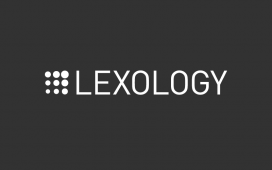
Grapecoin, a new cryptocurrency project that claims to be the “future of decentralized finance”, has experienced a massive sell-off after its initial coin offering (ICO) on December 20. The token price dropped by more than 40% in less than 24 hours, wiping out millions of dollars from investors who bought the hype.
According to the Grapecoin website, the project aims to create a “fair and transparent” ecosystem for lending, borrowing, and earning interest on crypto assets. The project also boasts of having a “unique” governance model that allows token holders to vote on important decisions and proposals.
However, some analysts and critics have pointed out several red flags and inconsistencies in the Grapecoin project. For instance, the project has not disclosed the identity of its team members, nor has it provided any proof of code audit or security audit. The project also has a high inflation rate of 10% per year, which could dilute the value of the token over time.
Tekedia Mini-MBA (Feb 5 – May 4, 2024) registration has started; beat early birds for discounts here.
Tekedia AI in Business Masterclass opens registrations here.
Join Tekedia Capital Syndicate and invest in Africa’s finest startups here.
Moreover, some investors have reported difficulties in withdrawing their funds from the Grapecoin platform, as well as encountering errors and glitches on the website and the app. Some have also accused the project of being a “rug pull”, a term used to describe a scam where the developers abandon the project and run away with the money.
The Grapecoin team has not issued any official statement or explanation regarding the token price crash or the technical issues. The project’s social media accounts have also been silent since the ICO. Some users have speculated that the project may have been hacked or compromised, while others have lost hope of recovering their investments.
The Grapecoin debacle is another reminder of the risks and challenges involved in investing in new and unproven crypto projects. While some projects may offer high returns and innovative features, they may also carry high volatility and uncertainty. Investors should always do their own research and due diligence before putting their money into any crypto venture.
Ethereum shows sign of life pumps to $2300
Ethereum, the second-largest cryptocurrency by market capitalization, has been showing some signs of life in the past few days. After a prolonged period of sideways trading, ETH finally broke out of its resistance zone and surged to $2300, a level not seen since early September.
What is behind this bullish momentum? There are several factors that could be contributing to Ethereum’s rally, such as:
- The anticipation of the upcoming upgrade, Ethereum 2.0, which will transition the network from a proof-of-work (PoW) consensus mechanism to a proof-of-stake (PoS) one. This will improve the scalability, security and efficiency of Ethereum, as well as reduce its environmental impact.
The growing adoption of decentralized applications (DApps) and decentralized finance (DeFi) protocols that run on Ethereum. According to DappRadar, there are over 3000 DApps on Ethereum, with more than $20 billion in total value locked (TVL). Some of the most popular DApps include Uniswap, Aave, Compound and MakerDAO.
The increasing demand for non-fungible tokens (NFTs), which are unique digital assets that can represent anything from art to music to gaming items. Ethereum is the dominant platform for NFT creation and trading, with over 90% of the market share. Some of the most notable NFT projects on Ethereum include CryptoPunks, Axie Infinity and Bored Ape Yacht Club.
The favorable technical indicators that suggest Ethereum is in a strong uptrend. ETH has crossed above its 50-day and 200-day moving averages, which are key support levels. It has also formed a bullish flag pattern on the daily chart, which indicates a continuation of the previous rally.
What does this mean for Ethereum investors? It is possible that Ethereum could continue its upward trajectory and reach new highs in the near future. However, there are also some risks and challenges that could hinder its growth, such as:
The competition from other smart contract platforms that offer faster transactions, lower fees and more innovation. Some of the main rivals of Ethereum include Cardano, Solana, Polkadot and Binance Smart Chain.
The regulatory uncertainty that surrounds the cryptocurrency industry. There have been some recent developments that could affect Ethereum’s legal status and taxation, such as the infrastructure bill in the US, the ban on crypto transactions in China and the proposed digital asset legislation in India.
The volatility and unpredictability of the crypto market. Ethereum is still subject to the influence of external factors, such as global events, market sentiment and whale movements. It is not uncommon for Ethereum to experience sudden drops or spikes in price, which could test the nerves of investors.
Therefore, it is advisable for Ethereum investors to do their own research, diversify their portfolio and manage their risk accordingly. Ethereum is a promising project with a lot of potential, but it is also a high-risk, high-reward investment that requires careful analysis and planning.
Serum becomes crypto’s next big thing
If you have been following the crypto space for a while, you might have heard of SBF, or Sam Bankman-Fried, the founder and CEO of FTX, one of the largest and most innovative crypto exchanges in the world. SBF is known for his philanthropy, his trading prowess, and his support for various crypto projects, especially those built on Solana, a high-performance blockchain platform that he helped fund and grow.
One of the projects that SBF has been backing since its inception is Serum, a decentralized exchange (DEX) that runs on Solana and leverages its speed, scalability, and low fees. Serum is not just a DEX, but a whole ecosystem of DeFi applications, such as lending, borrowing, derivatives, stablecoins, and more. Serum aims to bring the best of both worlds: the trustlessness and permissionlessness of DeFi, and the liquidity and efficiency of centralized exchanges.
Serum has been growing steadily since its launch in August 2020, attracting more users, developers, and partners to its platform. Recently, Serum announced a major milestone: it reached over $1 billion in total value locked (TVL), which is a measure of how much crypto assets are deposited in its smart contracts. This makes Serum one of the largest DEXes in the world, and the first one to cross the $1 billion mark on Solana.
But what makes Serum so special, and why is it poised to become crypto’s next big thing? Here are some of the reasons:
Serum is fast and cheap. Thanks to Solana’s architecture, which can process over 50,000 transactions per second with sub-second finality and sub-penny fees, Serum can offer a trading experience that rivals that of centralized exchanges. Users can trade any asset on Serum with minimal latency and slippage, without worrying about network congestion or high gas costs.
Serum is interoperable and composable. Serum is built with a cross-chain vision, meaning that it can connect with other blockchains and allow users to trade any asset across different platforms. For example, users can trade Bitcoin or Ethereum on Serum using wrapped versions of these assets that are compatible with Solana.
Moreover, Serum is designed to be composable, meaning that its components can be easily integrated with other DeFi applications to create new use cases and functionalities.
Serum is decentralized and community driven. Unlike centralized exchanges, which are controlled by a single entity and subject to regulation and censorship, Serum is fully decentralized and governed by its users. Anyone can create a market on Serum, list any asset, or provide liquidity.
Anyone can also participate in the governance of Serum by holding its native token, SRM, which gives them voting rights and other benefits. Serum’s community is vibrant and active, contributing to the development and innovation of the platform.
Serum is backed by SBF and other industry leaders. Serum has the support and endorsement of some of the most influential figures and organizations in the crypto space, such as SBF, who is also the co-founder of Serum; Alameda Research, one of the largest crypto trading firms; Jump Trading, a leading market maker; Multicoin Capital, a prominent crypto venture capital firm; and many others. These partners provide Serum with liquidity, capital, expertise, and exposure.
Serum is an old SBF favorite that has proven its value and potential over time. It is now becoming crypto’s next big thing as it continues to grow and innovate in the DeFi space. If you are looking for a fast, cheap, interoperable, decentralized, and community-driven DEX that is backed by some of the best in the industry, look no further than Serum.












